09-04-2025 | SV Microwave | Industrial
Quantum engineers need to make the right choices – particularly looking to the near future of more complex computers.
As quantum computers become more complex with a larger number of qubits, the number of required interconnects also increases. Maintaining optimal function across a large and intricate network of connections becomes more challenging, making choosing the right components and materials increasingly important. To do so, different factors must be considered:
To maintain qubit coherence, components on the quantum processing layer must be non-magnetic. They must also be high-density to connect multiple qubits in a small space.
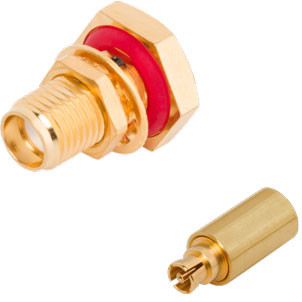
Engineers can make several choices to mitigate against qubit decoherence. Qubits – quantum computing's basic unit of information – are fragile. Decoherence leads to quantum information loss in qubits, making it impossible to perform accurate computations. Selecting the right interconnects for the unique demands of quantum computing is the difference between robust and reliable quantum computations or facing error-prone and unusable results.
Here's what you need to factor in when making the right choice for RF interconnects:
How many control channels are in your plan?
As quantum technology develops, engineers need to pack more and more components into smaller spaces. At the same time, research is focusing on how to scale up for more widespread use.
More control channels allow for more complex computations. Alongside this, interconnect designs capable of handling complex control signals must scale effectively to accommodate a growing number of qubits.
One solution is ganged connectors. These connectors allow for multiple connections in a compact area, offering much more efficient use of space compared to the traditional approach of one connecter for each control channel.
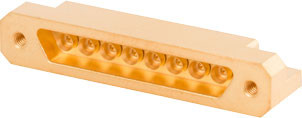
Edge Launch Ganged Connectors
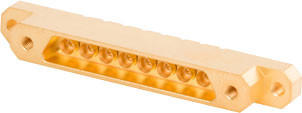
Surface Mount Ganged Connectors
Do you know the signal frequency and bandwidth required?
It's essential to match your interconnect's capabilities to the specific signal characteristics used in your system and keep any signal attenuation to an absolute minimum.
Minimising signal loss is crucial. Look for interconnects with low insertion loss and return loss to ensure strong signal integrity.
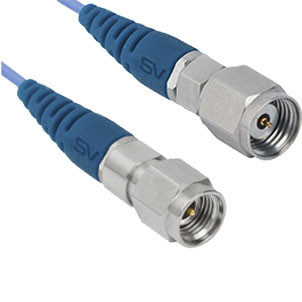
Low Loss Strain Relief Cable Assemblies
Bandwidth is another important factor. Limited bandwidth causes problems with scalability and slow computational time. New interconnect technologies with higher inherent bandwidth capabilities can help overcome limitations in data transfer rates.
What is the operating temperature range?
Quantum computing requires cryogenic operating temperatures – typically close to absolute zero. When designing for these exceptionally cold environments, you need confidence that your components can function optimally and maintain their electrical properties.
Choosing materials that operate well at cryogenic temperatures, for example, beryllium copper, Teflon, and stainless steel helps mitigate risks such as:
Fridge-to-rack cables are also essential components that connect the cryostat to the room-temperature controls outside High-quality cabling needs low attenuation and high phase stability to preserve signal integrity.
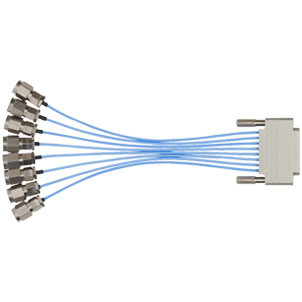
With its vast COTS offering, engineering expertise, and lengthy experience in the quantum field, the company can provide low-cost COTS products and unique, custom solutions where performance and fit are crucial.
